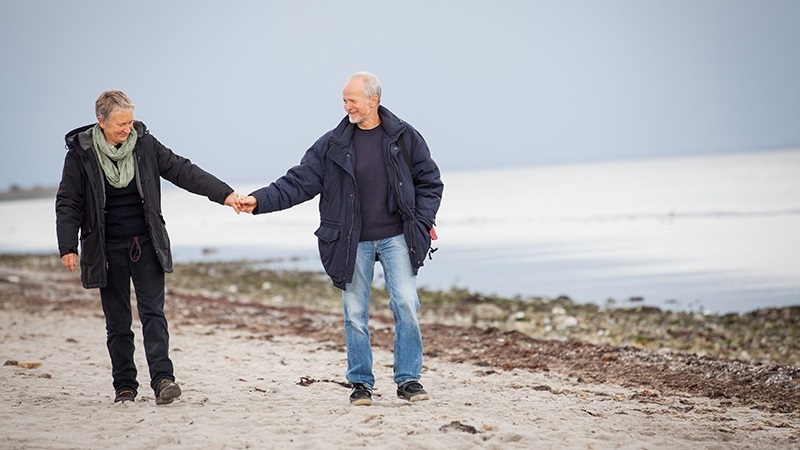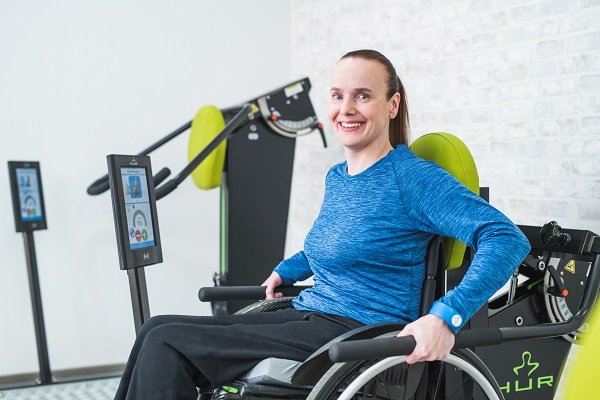All of us, regardless of our age, know that regular exercise is important. And yet, one government study estimates that nearly 80% of American adults do not get the recommended amounts of exercise each week. Those least likely to engage in physical activity? Adults 65 and older.
The question is not whether older adults know that they should exercise. It’s why more of them don’t exercise. While the answer to this question is personal and complex, there are likely several common factors at play…
- They are intimidated. Intimidating weight machines and cardio equipment, exercise classes that require complicated movements, and simply not knowing what to do - cardio? strength training? Zumba? yoga? – can make older adults feel intimidated enough to never want to step foot into a gym. The situation is even more intimidating if you’re are a wheelchair user or dealing with chronic pain or injury.
- Irregular workouts make every workout feel like starting over. Joining an exercise class or working with a trainer a few times a week sounds like a great idea. But, then the grandkids show up for a visit. The neighbor we love issues an invitation to coffee. A son or daughter comes over for lunch. Maintaining a schedule is important, but when the window of opportunity to work out is too narrow, it’s all too easy for other priorities to take precedence.
- The fear of failure and embarrassment. For older adults who haven’t visited a gym in a long time – or ever! – the whole thing can be terribly intimidating. After all, no one likes walking into a new situation feeling incompetent. Signing up for personal training sessions or exercise classes is extra scary because they carry with them the possibility that we’ll fail in front of other people.
- Physical limitations make them feel inadequate. Let’s face it. It’s human nature to cling to excuses about why we can’t do something we know we should but don’t want to do. For many older adults, chronic conditions such as arthritis, osteoporosis, and joint deterioration are a constant reminder of their own physical limitations. There is a tendency for many older adults to believe that they’re “too old” or “too injured” to exercise.
- Emotional distress. Loneliness and depression are serious problems for many older adults. If it’s difficult to even get out of bed or leave the apartment for a while, imagine how difficult it is to gather the motivation and energy to visit the gym.
There’s no easy answer to these challenges, but independence and autonomy can help.
Admittedly, this is often a catch 22. For Seniors struggling to maintain their autonomy and independence, regular exercise – especially strength training – can be a tremendous support. But, when intimidating equipment and physical limitations require constant assistance, workouts are just one more reminder of something seniors can’t do on their own.
The psychological need for independence and autonomy as we age is a critical quality of life issue. While exercise is a vital component of retaining independence and autonomy, having some level of independence and autonomy over workouts themselves is perhaps equally important for many older adults.
The most effective workout for seniors is one that allows them to exercise their independence.
Granted, the level of independence possible for a safe, effective workout will vary from person to person. Independence and autonomy is relative. The point is that the more independence and autonomy we can offer older adults, the better. So… how do we do this?
Exercise Equipment is Important. Most exercise equipment is made for younger adults and is too challenging, intimidating, and unsafe for older adults to use without constant assistance and supervision. Pneumatic (air resistant) technology because is generally safer, easier to use, and more effective at both low and high movement speeds than weight-loaded machines.
Unlike traditional weight machines, air resistance allows older adults to start off with zero resistance and increase resistance by 1/4 pound increments. Air resistance also lacks the inertia of weight-loaded machines, which is ideal for people undergoing rehabilitation, and for those who are new to strength training.
In other words: pneumatic technology allows older adults to give it their all while maintaining a low risk of injury.
Exercise Variety and Options are Important. For most of us, monotony and boredom are strong motivation killers. We all like options – especially the option to choose activities that interest us. This is, or course, no less true for older adults.
Offering as many options as possible for cardio, flexibility, balance, and strength training exercises can not only increase the likelihood that older adults will begin an exercise program, it makes it more likely that they will stick with it.
More than that, older adults need options that will allow them to adjust their workout based on how they feel that day or how much time they have. Without these options, it’s too easy to skip a workout on days when they feel tired, or an unexpected event is thrown into their schedule.
For example, HUR SmartTouch technology allows older adults control over how hard they work out, the duration of their workout, and the movements and activities they do during any given training session. Cardio and balance training equipment like The CyberCycle and HUR SmartBalance, allows Seniors to choose amongst several activities, difficulty, and challenge options.
Tracking and personalized exercise programs are important. As we pointed out earlier, intimidation and a fear of failure are amongst the biggest reasons why more seniors don’t exercise. Options within a program are important. ← “Within a program” are the keywords in that sentence.
Throwing a whole bunch of options at people with absolutely zero structure or direction is just as demotivating as offering no options at all. Autonomy is important, but autonomy also requires structure.
As many senior living facilities are working with a limited number of staff, technology is helping to fill the gap, allowing health care professionals to program training parameters into a system that allows both autonomy and data tracking.
Choices, choices, choices.
When it comes to getting more older adults to engage in regular cardio, flexibility, balance, and strength training, independence and autonomy is key. So where do you go from here? How do you begin to offer Seniors in your care more choices? Here are a few ideas…
- Take a look at these 6 strength training exercises that can be completed in 30 minutes.
- Gather ideas for how to incorporate core strength into everyday life.
- Check out these 8 amazing exercises for seniors in wheelchairs.
- Talk with a HUR specialist about how you can incorporate more equipment into your gym that’s specifically designed for Seniors.
“The HUR equipment has been such an invigorating addition to our Fitness Center. The smart card technology has allowed the Residents to go through the circuit independently and provides them with the confidence they need each day to feel strong. It allows them to see their progress on a daily basis and make it part of their routine. They are feeling younger, stronger and confident! They can set new life goals knowing they can maintain or even better improve their strength!”
- Chris Morrison, North Hill




